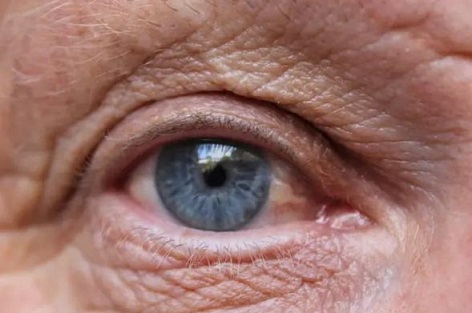Nikhil Prasad Fact checked by:Thailand Medical News Team Jul 18, 2024 1 year, 4 months, 2 weeks, 5 days, 3 hours, 50 minutes ago
Ophthalmology Updates: The Silent Threat to Vision
Age-related macular degeneration (AMD) is a leading cause of blindness worldwide, silently creeping into the lives of many as they age. This
Ophthalmology Updates news report delves into a groundbreaking review exploring the role of reactive oxygen species (ROS) in AMD and the potential of antioxidant therapies to combat this debilitating condition. Conducted by researchers from McGill University, University of Sherbrooke, and University of British Columbia, this study offers new hope for those affected by AMD.
 Tackling Age-Related Macular Degeneration with Antioxidants
Understanding AMD and Its Causes
Tackling Age-Related Macular Degeneration with Antioxidants
Understanding AMD and Its Causes
Age-related macular degeneration (AMD) affects the macula, the central part of the retina responsible for sharp vision. As the disease progresses, it can lead to severe vision loss. The exact cause of AMD is still unclear, but it is widely accepted that oxidative stress plays a significant role. Oxidative stress occurs when there is an imbalance between free radicals (ROS) and antioxidants in the body, leading to cellular damage.
The Role of Reactive Oxygen Species
ROS are by-products of normal cellular metabolism but can cause significant damage when their levels become excessive. In the context of Age-related macular degeneration (AMD), ROS can damage the retinal pigment epithelium (RPE) and Bruch’s membrane, crucial components of the eye that help maintain healthy vision. This article highlights the dual nature of ROS, showing that while they are essential for cellular signaling, their overproduction leads to harmful effects.
Antioxidant Therapies: A Ray of Hope
Given the detrimental effects of ROS, antioxidants have been proposed as a potential therapy for Age-related macular degeneration (AMD). Antioxidants neutralize ROS, thereby protecting cells from damage. The review examines various antioxidants, from dietary nutrients like vitamins C and E, lutein, and zeaxanthin to pharmacological agents, gene therapy, and nanotechnology-based delivery systems.
Dietary Antioxidants
Diet plays a crucial role in managing AMD. Vitamins C and E are powerful antioxidants found in many fruits and vegetables. They help protect the eyes by neutralizing free radicals. Studies have shown that higher intake of these vitamins is associated with a reduced risk of Age-related macular degeneration (AMD) progression.
Lutein and zeaxanthin, found in green leafy vegetables, are carotenoids that accumulate in the retina and protect against oxidative damage. These nutrients filter harmful blue light and act as antioxidants, reducing the risk of AMD.
Pharmacological Approaches
Beyond diet, pharmacological agents with antioxidant properties are being explored. The review discusses novel therapeutic approaches, including gene therapy and nanotechnology-based delivery systems. These innovative strategies aim to enhance the delivery and e
ffectiveness of antioxidants in the eye, offering new avenues for AMD treatment.
Gene Therapy and Nanotechnology
Gene therapy holds promise for Age-related macular degeneration (AMD) by targeting specific genes involved in oxidative stress and inflammation. This approach aims to enhance the eye’s natural antioxidant defenses, providing a long-term solution to managing AMD.
Nanotechnology, on the other hand, focuses on creating tiny particles that can deliver antioxidants directly to the affected areas in the eye. This method ensures that antioxidants reach the retina in higher concentrations, improving their effectiveness in combating oxidative stress.
Clinical Trials and Future Directions
The review synthesizes current research findings, clinical trial data, and meta-analyses to provide evidence-based recommendations. While significant progress has been made, further research is needed to optimize antioxidant therapies, considering individual patient factors and disease stages.
The comprehensive study review offers valuable insights into the potential of antioxidants in managing Age-related macular degeneration (AMD). It underscores the importance of a multi-faceted approach, combining dietary changes, pharmacological treatments, and advanced therapies like gene therapy and nanotechnology.
Conclusion
The findings from this comprehensive review highlight the potential of antioxidants in mitigating the burden of AMD. By understanding the role of ROS and exploring innovative antioxidant therapies, we move closer to effective treatments for this common cause of blindness.
The study findings were published in the peer-reviewed journal: Biomedicines
https://www.mdpi.com/2227-9059/12/7/1579
For the latest
Ophthalmology Updates, keep on logging to Thailand Medical News.
Read Also:
https://www.thailandmedical.news/news/cells-involved-in-age-related-macular-degeneration-that-causes-blindness-in-the-elderly-finally-identified
https://www.thailandmedical.news/news/new-hope-for-age-related-macular-degeneration-vitamin-d-and-sulforaphane-s-synergistic-effects
https://www.thailandmedical.news/news/new-hope-for-age-related-macular-degeneration-the-power-of-antioxidants-and-diet
https://www.thailandmedical.news/news/microrna-let-7f-identified-as-a-key-player-in-dry-age-related-macular-degeneration
https://www.thailandmedical.news/news/breaking-covid-19-news-sars-cov-2-causes-macular-degeneration-by-promoting-rpe-cell-senescence-via-the-ros-p53-p21-pathway
https://www.thailandmedical.news/news/amd-or-age-related-macular-degeneration-researchers-identify-vitronectin-as-new-drug-target-for-dry-age-related-macular-degeneration
